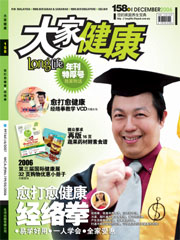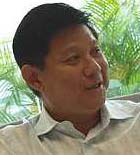At the function, Prime Minister Datuk Seri Abdullah Ahmad Badawi announced the first batch of bio nexus status companies:
They are
1.Malaysian Bio Diagnostic Research Sdn Bhd,
2.KL Biotech Manufacturing Sdn Bhd,
3.Vivantis Technologies Sdn Bhd
4.Nova Laboratories Sdn Bhd,
5.The Asiatic Centre for Genome Technology Sdn Bhd and
6.Innobiologics Sdn Bhd.
Three company above, Malaysia Bio Diagnostic Reseach Sdn Bhd, Nova Laboratories Sdn Bhd and The Asiatic Centre for Genemo Technology Sdn Bhd never participate in the Exhibition.
KL Biotech Manufacturing Sdn Bhd(KLBM)
KLBM was established by its CEO Dr Abdul Reezal Abdul Latiff. This company was incorporated to concentrate and focus on research, development manufacturing and commercialization of its formulation and intellectual property. The sales and marketing of KLBM's product is done by its sister company KL Biotech. KLBM's current activity is in the formulation and development of products derived from local herbal and biodiversity. The principal activities of KLBM are as follows:
- Reseach and Development of new herbal and local base products
- Manufacturing of health based products
- New formulation development
- Manufacturing of pharmaceutical products
- Licensing out formulation and intellectual property to third party clients
Vivantis Technologies Sdn Bhd
CEO of Vivantis Technologis Sdn Bhd Mr Law Eng Lim talk on " How Not to lose millions in Biotech Venture" at the conference while it Senior Manager, Laboratory Dr. Chee Hui Yee make a company presentation at the conference.
Innobiologics Sdn Bhd
CEO of Inno Biologics Sdn Bhd Dr Mohd Nazlee talk on "Bio Manufacturing In Asia" in the conference. Dr Mohd Nazlee Kamal became CEO of Inno Biologics Sdn Bhd in December 2002. Prior to Nazlee's employment with Inno Biologics, he was the Asean Business Area Manager (Separation) for Amersham Biosciences. he was leading the sales and marketing effort for Separations product range in ASEAN. He was also responsible for technical issues surrounding the protein separation and purification for laboratory and manufacturing scale. Among his contribution was the product trial at Kirin Pharmaceutical, Japan for second generation Erythropoietin production. before that he was the Business Development Manager at Sartorius in 2001 after B.Braun Biotech was bought-over by Sartorius. He was Sales Manager at B.Braun Malaysia from 1997 to 2000. He was instrumental in the business development of B. Braun bioreactors sales and marketing effort in Malaysia. He was a Lecturer at the University of Technology Malaysia from 1986 to 1996.
Nazlee hold a PhD. in Chemical Engineering (Bioprocess) from University of Queensland, Brisbane, Australia.
Nazlee was responsible for the development of the Bioprocess Engineering programme at University Technology Malaysia when he was a member of Bioprocess Engineering Department. He has written numerous papers for journals and presentation at Conferences. He was the inventor of the "External Spinfilter" now marketed by Sartorius BBI Systems.
Public Listed Company
Public listed company that participate at the above function included main board, second board and mesdaq listed company:
Equator Life Science Bhd
Subsidiary of Mesdaq listed Equator Life Science Bhd, Biosmart Sdn Bhd unveil biotechnology waste management system for palm oil plantation companies. An invention joint venture with Taiwan National Chung Hsing University. This is the second Biotechnology product from Taiwan National Chung Hsing University enter Malaysia market. The first is GT&F Milk Powder for diabetic.
Hovid Bhd
Hovid Bhd showcase their Tocovid SupraBio product, Vitamin E from palm oil.It managing Director Mr David Ho Sue San talk on 'Leveraging on Malaysia Natural Products" at the conference and chair the "Progress and Development of Asia's Pharmauceutical Industry" in a conference session.
INS Bioscience Bhd
Mesdaq listed INS Bioscience Bhd showcase their Insupro Forte product for diabetic.
StemLife is tthe first and leading stem cell bank and therapeutics company in Malaysia. Established since 2001, it focuses on stem cell collection and storage providing quality, cost efficient haematologic care. StemLife provides cord blood banking and is the only adult stem cell bank in the region offering storage services to both healthy individuals and patients undergoing therapy. StemLif, in collaboration with doctors offers therapeutic care for heart conditions, cancers, diabetic foot ulcers and leukemia.
TMC Lif Sciences Berhad is the only centre in Malaysia to provide a comprehensive range of fertility services including Pre-Implantation Genetic Diagnosis. It is a market leader in Assisted Reproductive Technologies (ART). Backed by an R&D International Advisory anel, its pregnancy success rates, are comparable to top In-Vitro Fertilisation (IVF) centres in UK & USA. Tghe company conducts numerous R&D projects including innovating a patent product which contributes to its high success rates.Tag: Malaysia: Biotechnology klse


 Road Builder Group
Road Builder Group





